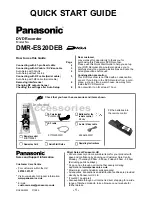
100/180 mm PAPERLESS GRAPHIC RECORDER: USER GUIDE
HA028910
Issue 13 Sep 16
User Guide
Page 216
4.5.1 NETWORK ADDRESS (Cont.)
SNTP SERVER NOTES (Cont.)
5. An ‘SNTP server failure’ instrument alarm is fl agged if the confi gured server cannot be ac-
cessed, or if the year received from the server is less than 2001 or more than 2035.
6. When the instrument is acting as a server and a “Clock Failure’ instrument alarm is active, the
server time is set to 1/1/1900 which is ignored by clients.
7. Servers such as Microsoft ‘TimeServ’ cannot be used with this series of instruments because
they are not SNTP servers.
8. If the Simulation option is enabled and ‘SNTP client enable’ is enabled, then the recorder syn-
chronises only on power up. If ‘SNTP server enable’ is enabled, the server output will follow the
recorder time.
SNTP TIMEOUT
This parameter allows a timeout in seconds to be confi gured. The parameter defaults to 20 seconds en-
suring that the system continues to behave as before for users who do not change this value.
EUROPRP SERVER ENABLE
Enabling this item causes the instrument to ‘declare itself’ (i.e. to become visible to a network scanning
tool running on a PC), thus allowing the pc user to identify all such instruments on a network.
ACTIVE DIRECTORY SERVER
This item appears only if the Security Manager option is enabled. It allows an Active Directory server IP
address to be entered for use with this application. The IP address would normally be obtained from the
user’s IT department or Network administrator. Once entered, assuming the recorder is connected to
the same network as the server, users with a domain confi gured will be able to login using their normal
network login password.
If ‘Domain name Service’ is enabled (
section 4.5.2
), then a domain name may be entered here instead of
an IP address,
ACTIVE DIRECTORY SECURITY
This item appears only if the Security Manager option is enabled. If set to None (default), then any at-
tempt to change a password will be rejected because it has not been encrypted. One of the alternative
TLS ports must be used if passwords are to be changed at the recorder.
When TLS (port 636) is selected all access to the server is secured using TLS on port 636 using the LDAP_
SERVER_START_TLS_OID method. TLS (port 389) is similar but uses TLS on port 389.
PASSWORD CACHE EXPIRY
This applies only if the Active Directory is not available.
Starting from when the server becomes unavailable, once the confi gured number of days has expired
since the last successful log in (by any user), the Password cache is cleared the next time any user at-
tempts to log in. The user’s password is ‘Invalid’ and a pop-up message (Active Directory Password
Cache has expired) appears. This means that no Domain users can log in until the Active Directory server
becomes available again.
Values of 0 (default) to 30 days can be entered, where a value of 0 disables Cache expiry (i.e. it never
expires).
















































